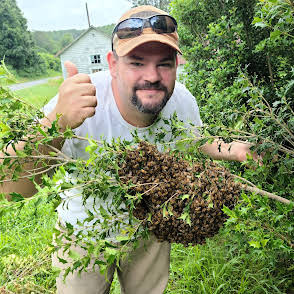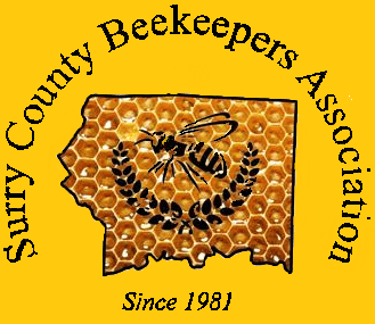
Swarming is a honey bee colony's natural means of reproduction. In the process of swarming, a single colony splits into two or more distinct colonies.Swarming is mainly a spring phenomenon, usually within a two- or three-week period depending on the locale, but occasional swarms can happen throughout the producing season. Secondary afterswarms, or cast swarms may happen. Cast swarms are usually smaller and are accompanied by a virgin queen. Sometimes a beehive will swarm in succession until it is almost totally depleted of workers.
Worker bees create queen cups throughout the year. When the hive is getting ready to swarm, the queen lays eggs into the queen cups. New queens are raised and the hive may swarm as soon as the queen cells are capped and before the new virgin queens emerge from their queen cells. A laying queen is too heavy to fly long distances. Therefore, the workers will stop feeding her before the anticipated swarm date and the queen will stop laying eggs. Swarming creates an interruption in the brood cycle of the original colony. During the swarm preparation, scout bees will simply find a nearby location for the swarm to cluster. When a honey bee swarm emerges from a hive they do not fly far at first. They may gather in a tree or on a branch only a few metres from the hive. There, they cluster about the queen and send 20–50 scout bees out to find suitable new nest locations. This intermediate stop is not for permanent habitation and they will normally leave within a few hours to a suitable location. It is from this temporary location that the cluster will determine the final nest site based on the level of excitement of the dances of the scout bees. It is unusual if a swarm clusters for more than three days at an intermediate stop.
Swarming creates a vulnerable time in the life of honey bees. Swarms are provisioned only with the nectar or honey they carry in their stomachs. A swarm will starve if it does not quickly find a home and more nectar stores. This happens most often with early swarms that leave on a warm day that is followed by cold or rainy weather in spring. The remnant colony, after having produced one or more swarms, is usually well provisioned with food. But, the new queen can be lost or eaten by predators during her mating flight, or poor weather can prevent her mating flight. In this case the hive has no further young brood to raise additional queens, and it will not survive. A cast swarm will usually contain a young virgin queen.


Swarm Cell
What is a swarm?
While they may look frightening, bees that are swarming and carrying honey from their old hive are much less defensive or likely to sting than they would be if they were protecting brood (immature bees) at the old hive. They shouldn't pose much danger if left undisturbed but will sting if provoked.
Is a swarm dangerous?
What should I do?
Swarms are temporary and the bees will move on if you patiently ignore them. Stay back and keep others away from the swarm, but feel free to admire and appreciate the bees from a safe distance. You may want to contact the SCBA to re-home the bees for the best chance of their several.


